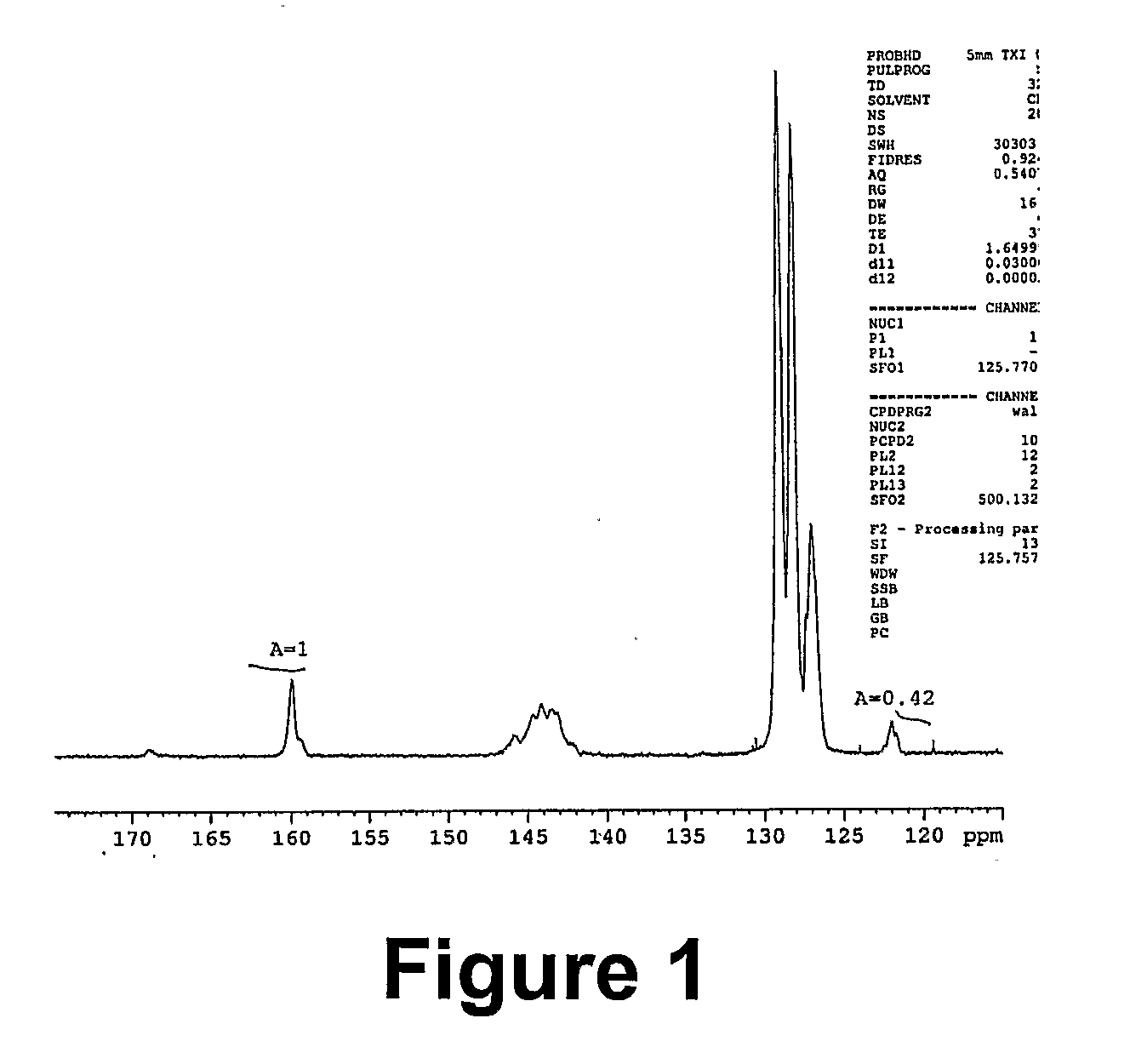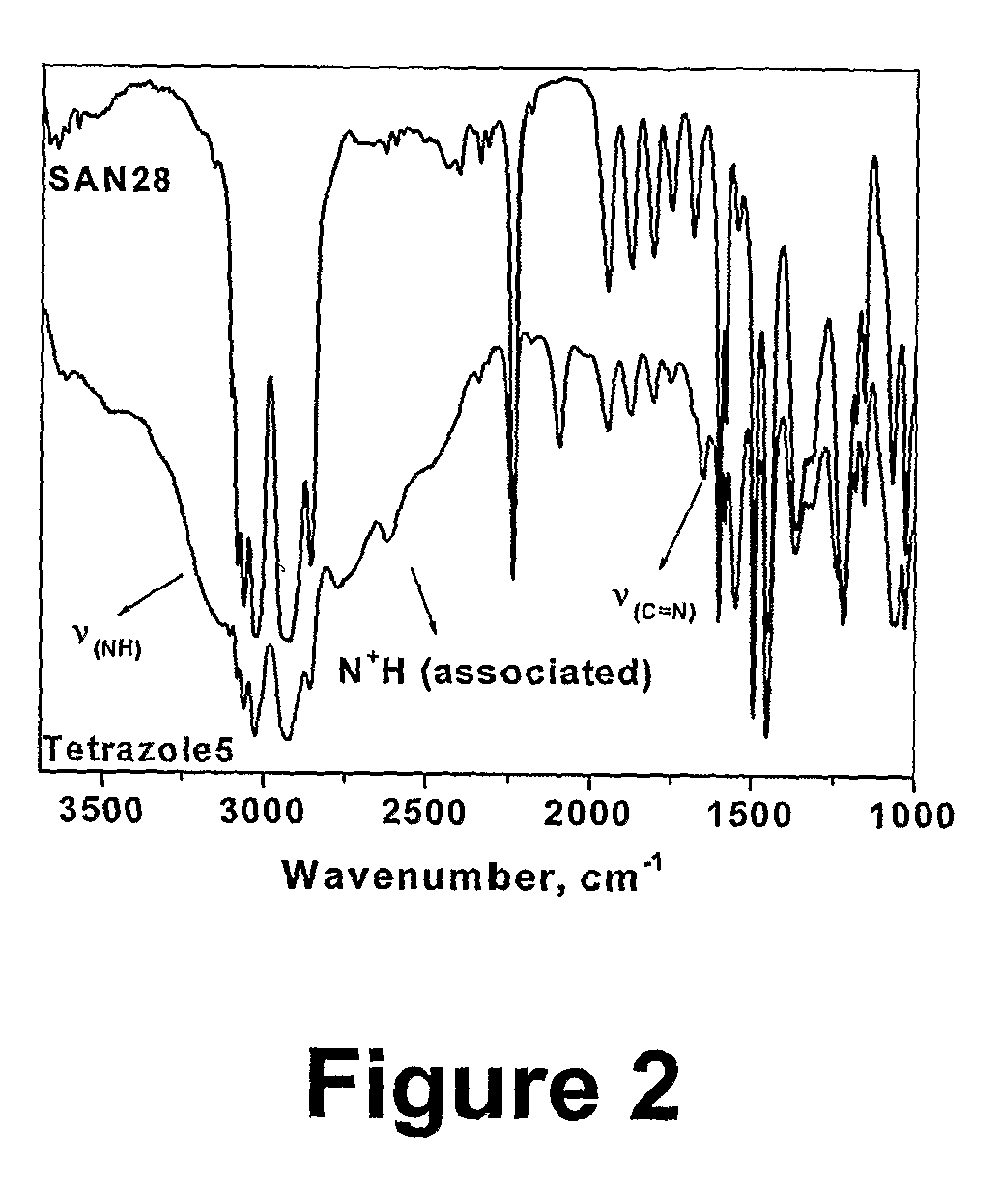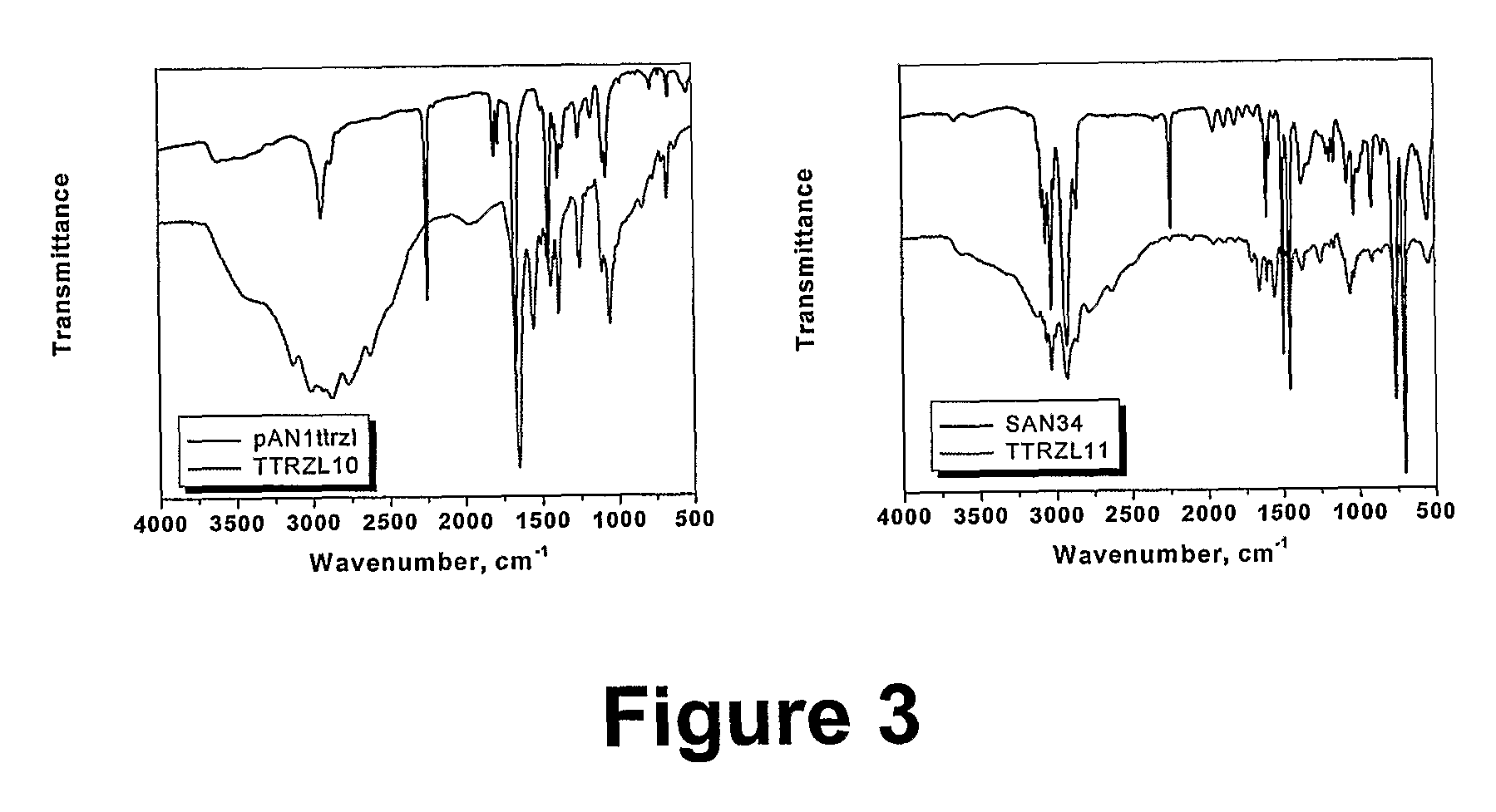Preparation of Functional Polymers
a functional polymer and polymer technology, applied in the field of functional polymer preparation, can solve the problems of low yield, many functional monomers may not be suitable, and many monomers with desired functionality may not be suitable for use, and achieve high selective effect and high yield
- Summary
- Abstract
- Description
- Claims
- Application Information
AI Technical Summary
Problems solved by technology
Method used
Image
Examples
example 1
Conversion of the Nitrile Groups in a SAN Copolymer to Tetrazole Unit
[0067] 2.79 g (0.3 mmol, corresponding to approximately 0.012 mol of nitrile groups) of a styrene / acrylonitrile copolymer (SAN28 M, =9260 g / mol, PDI=1.14) was dissolved in 10 ml of DMF. 1.56 g (0.024 mol) of sodium azide and 3.27 g (0.024 mol) of zinc chloride were then added and the mixture was stirred at 100° C. for 24 h. After about 4 h, the salts had almost completely dissolved. A mixture of 200 ml of water and 15 ml of concentrated hydrochloric acid was separately prepared. 2 ml of this mixture was added to the reaction mixture (the latter had been cooled down to 60° C.), and the obtained suspension of polymer was stirred at 60° C. for 2 h. The polymer was then precipitated in the same dilute hydrochloric acid. The resulting suspension was stirred at room temperature overnight. The filtered polymer washed with water and methanol on the filter. It was then dissolved in DMF (20 ml), and the turbid mixture was p...
example 2
Synthesis of Block (Co)Polymers Containing Tetrazole Groups by ATRP
[0069] Two different block copolymers of styrene and acrylonitrile were prepared. Sty190AN38 and Sty190AN10. These polymers were then converted to tetrazole-containing copolymer by the reaction with excess molar levels of sodium azide in the presence of zinc chloride.
example 2a
Preparation of Diblock Copolymers of Styrene and Acrylonitrile Using Halogen Exchange to Prepare Narrow Molecular Weight Polyacrylonitrile Blocks
[0070] 6.93 g of a pStyBr macroinitiator (Mn=19800 g / mol) was dissolved in a mixture of 14 ml of DMF and 10.5 ml of AN added. The catalyst complex for the ATRP consisted of 0.035 g CuCl and 0.109 g bpy. The polymerizations were performed at 80° C. The results are presented in Table 1.
TABLE 1Preparation of poly(styene-b-acrylonitrile) copolymersMn, g / mol (GPC,Timeconv., and NMR)of pzn,Conv[DP of AN blockEntrymin(GC)by NMR]PDISty-b-AN3900.14021700, 21200 [36]1.16Sty-b-AN4250.05220500, 20400 [10]1.13
[0071] The two copolymers with pAN blocks of DP=10 and 38 were used for the preparation of the corresponding block-tetrazoles and block-amines copolymers. The micellular association of these block copolymers in solution will be studied, as well as using them as a template for absorption of metal ions.
PUM
| Property | Measurement | Unit |
|---|---|---|
| molecular weight distribution | aaaaa | aaaaa |
| molar ratio | aaaaa | aaaaa |
| PDI | aaaaa | aaaaa |
Abstract
Description
Claims
Application Information
 Login to View More
Login to View More - R&D
- Intellectual Property
- Life Sciences
- Materials
- Tech Scout
- Unparalleled Data Quality
- Higher Quality Content
- 60% Fewer Hallucinations
Browse by: Latest US Patents, China's latest patents, Technical Efficacy Thesaurus, Application Domain, Technology Topic, Popular Technical Reports.
© 2025 PatSnap. All rights reserved.Legal|Privacy policy|Modern Slavery Act Transparency Statement|Sitemap|About US| Contact US: help@patsnap.com



